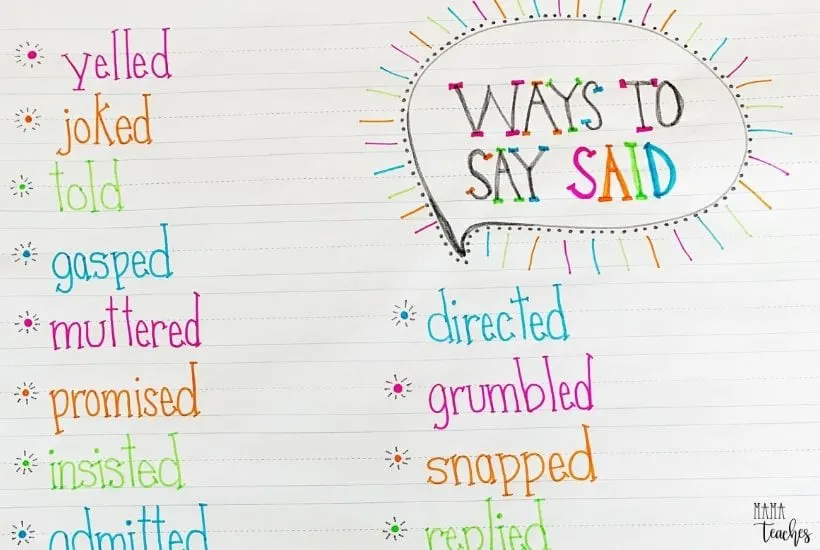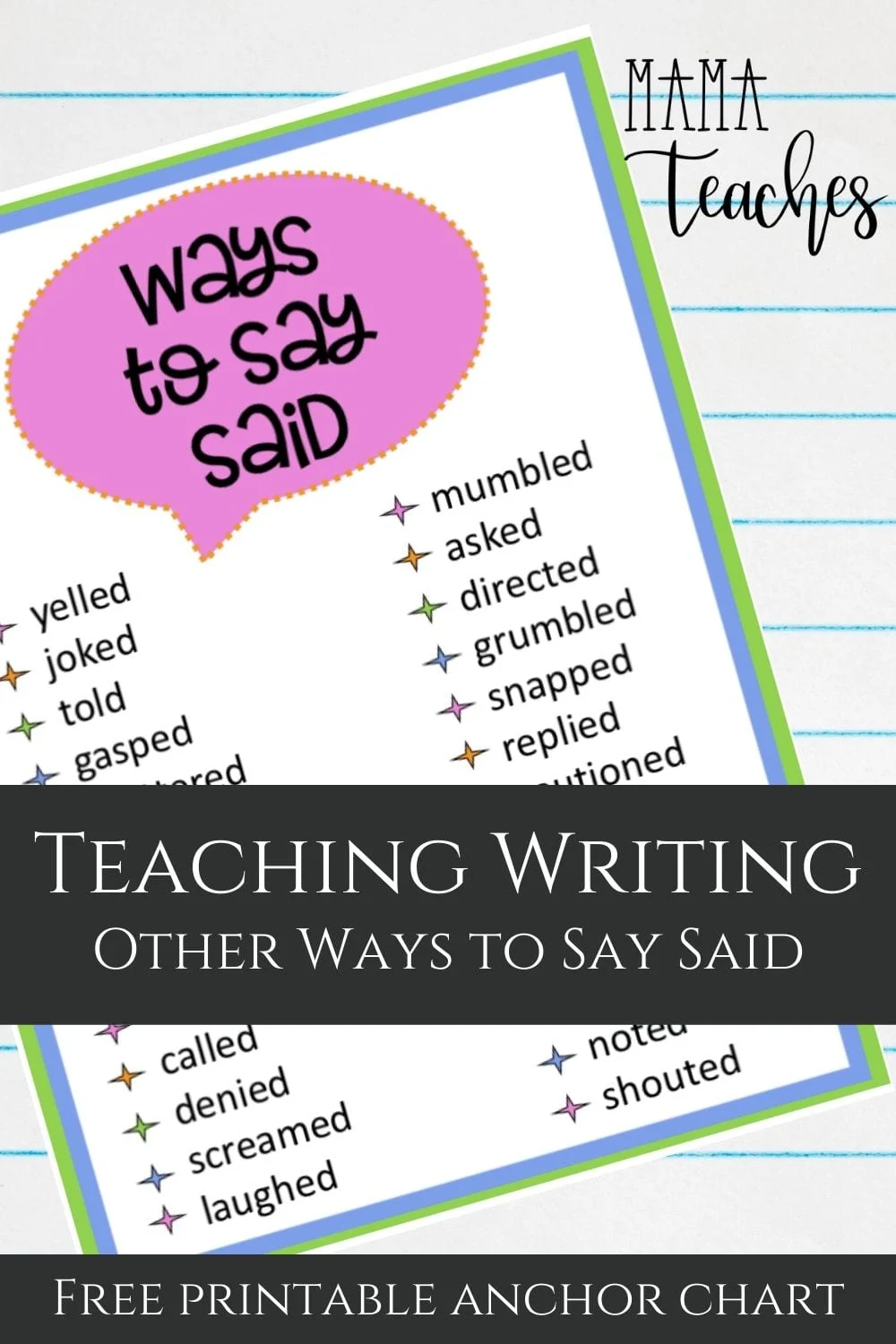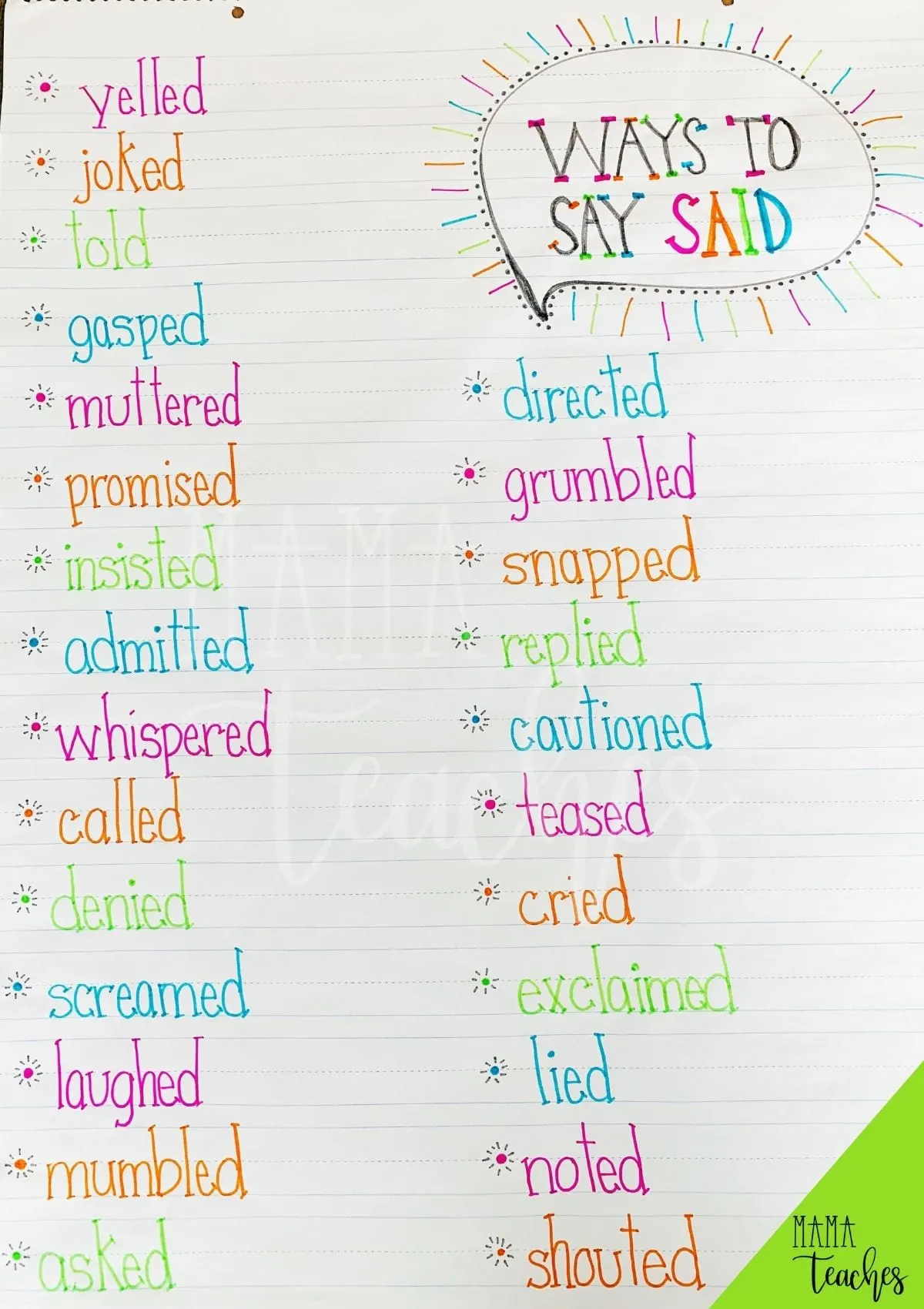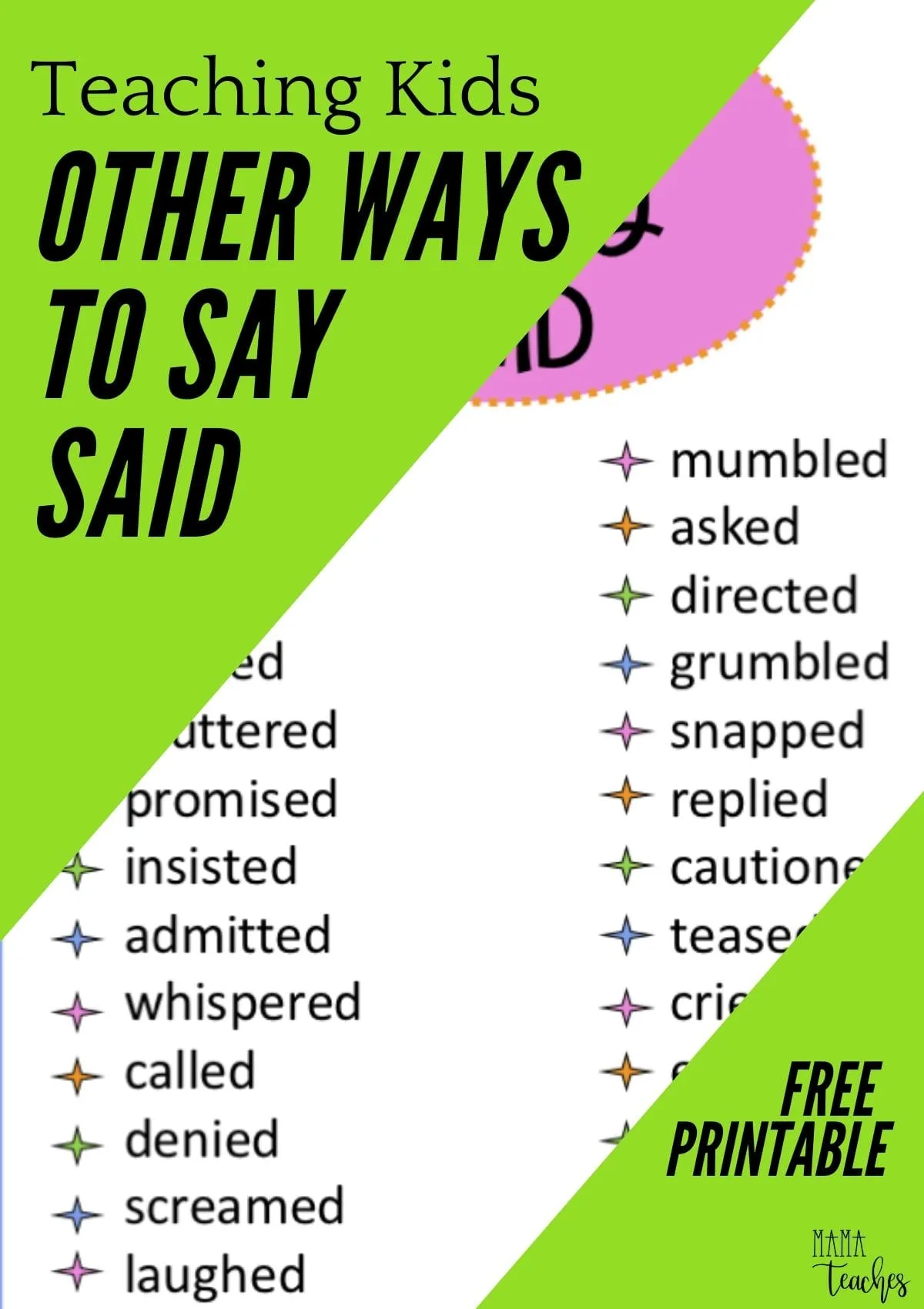
This article contains affiliate links to things that you might like.
Teaching kids to vary their writing with other ways to say said can change an average writer into an excellent one.
I’ve always found that dialogue is one of the most challenging things to teach in writing.
Learning how to convey emotions and tone in conversations isn’t always easy – especially for young writers.
One of the ways to help them break through the barrier of dull dialogue is to introduce them to different ways to say said. Here’s what has worked for me.
Other Ways to Say Said
I don’t know how many papers I have read over the years that were filled with “he said,” “she said,” “I said,” and “they said.” Said is a great word to convey the action of speaking, but it doesn’t have a lot of emotion behind it.
I want to raise writers who like a little pizzazz in their dialogues.
It not only helps to make the writing more interesting for the reader, but it helps paint the picture of the interaction.
Model Different Ways to Say Said in Dialogue
In order to help kids understand what you’re asking them to do by substituting the word said and why you’re asking them to do it, you have to give them examples.
For instance, compare the two sentences below:
“When I was little I liked to ride my bike too,” Paige said.
“When I was little I liked to ride my bike too,” Paige smiled.
Which sentence shows more about Paige’s reaction to remembering that she used to ride her bike? The second one, of course.
An easy way to do this is to take the book that you’re currently reading aloud with the class and substitute the word said for dialogue where the author has chosen synonyms instead.
Ask the students to compare the two versions and weigh in with their opinions about how an alternate form of said can change the mental image they have of the interaction.

Brainstorm Ways to Say Said
After students understand the why and what, it’s time to brainstorm other ways that they can say said in their writing.
I like to jot down their ideas on chart paper and display it for future use.
I know some teachers prefer not to have the visual aids available, but I have found that it helps solidify the concept in students’ minds and makes them more likely to incorporate interesting dialogue in their writing.
Here’s the anchor chart that I created for my kids that lists other ways to say said when they’re writing their stories.

Practice, Practice, and More Practice
The only way to really get students to use other words to say said is to let them practice writing.
For this, I start by giving them dialogue scenarios and asking them to write a short dialogue incorporating the situation.
Here are some dialogue scenarios to use:
- Two friends are talking about their weekend
- A person is purchasing an item at an electronics store
- A parent is asking their child how the day was
- A grandparent is telling a grandchild a story
- Someone new wants to sit at your lunch table
- Welcome a new student in gym class
You can also ask students to rewrite dialogue from a book by substituting synonyms for the word said.
Don’t forget to remind them that it is absolutely okay to use the word said occasionally in their writing!
Just because there are other ways to say said, it does not mean that they need to stop using it entirely.
Sometimes the best dialogue includes it.
Ways to Say Said Cheat Sheet
Using the anchor chart that we made as the inspiration, I turned the poster into a printable list for kids to keep in their language arts notebooks or folders.

I like to have kids tape it to the inside cover of their writing notebooks for easy reference.
You can grab a free copy of it to use with your students in the Freebies Library.
Not a member of the Freebies Library yet? Click below to sign-up. You’ll be sent the password in an email so be sure to check your inbox.
Thanks so much for being here! Happy teaching!

